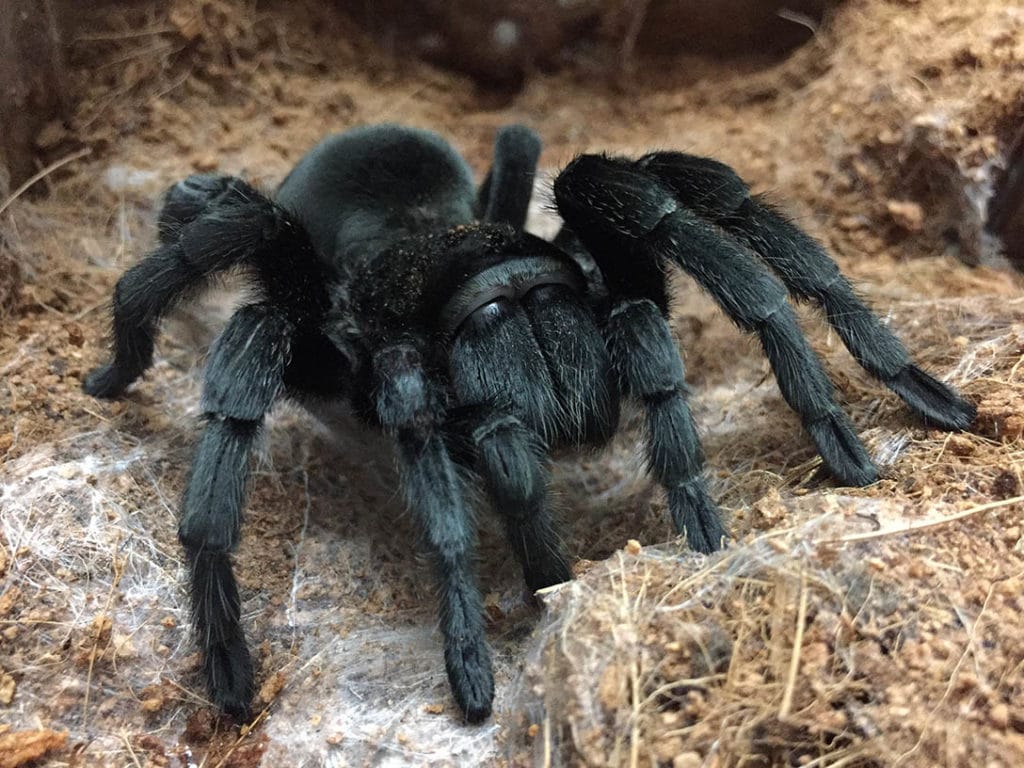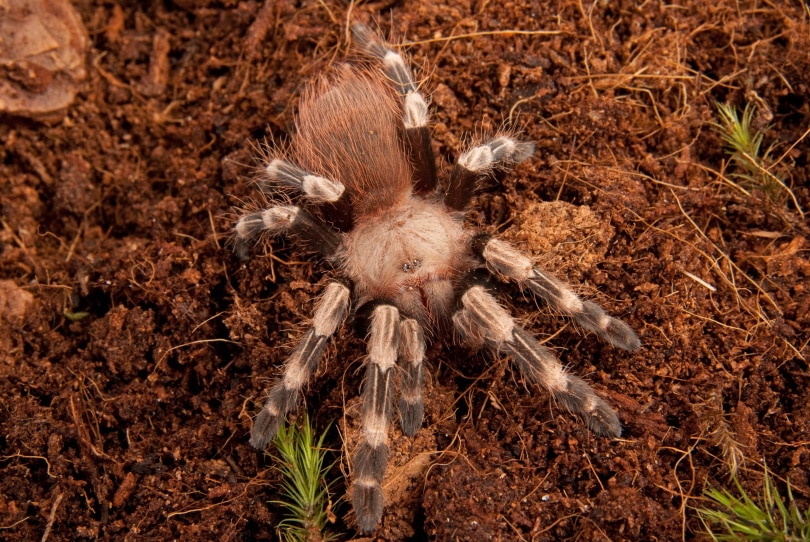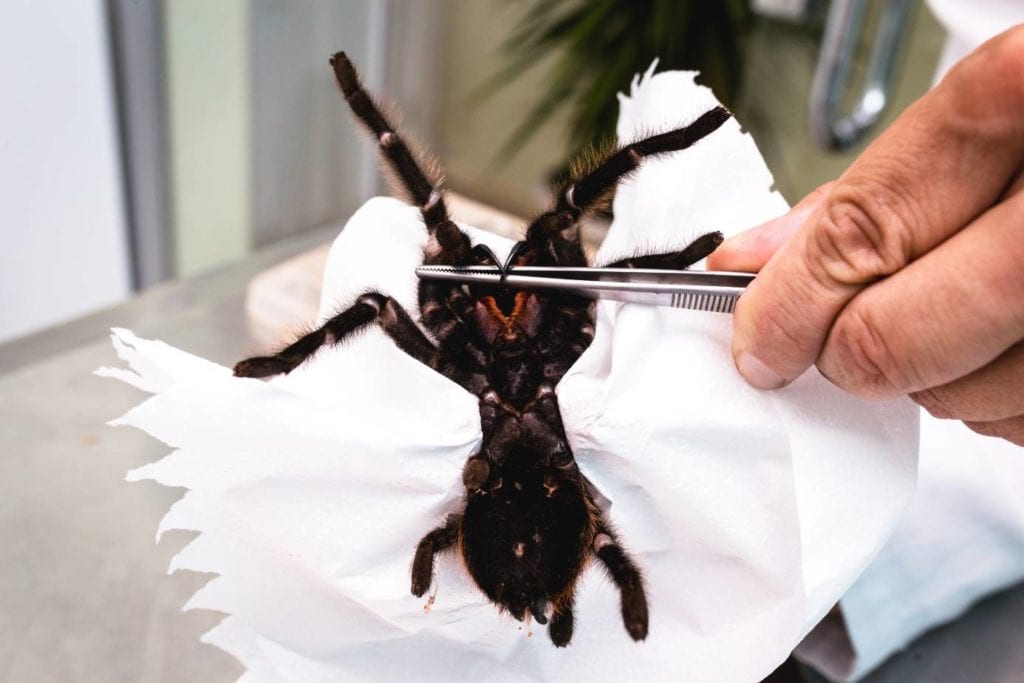
There’s little doubt that a tarantula is one of the most cost-effective pets that you can own. They live anywhere between 10 and 30 years, don’t cost a ton up front, and cost even less to maintain from month to month.
But exactly how much does it cost to purchase a tarantula and everything that you need to keep them alive and happy? We break it all down here. From initial costs to the monthly expenses, we got you covered. This way, you know exactly what you’re getting yourself into before you bring one home.
 Bringing Home a New Tarantula: One-Time Costs
Bringing Home a New Tarantula: One-Time Costs
Factoring the cost of bringing home a tarantula is about more than what you’ll pay to purchase the spider. You also need to factor in everything that they need in their enclosure and the enclosure itself! We broke down each different expense here, so you know exactly what to expect.

Free
While there’s not an overabundance of free tarantulas out there, if you do know someone who’s tired of owning one, you might be able to get them for free. More often, though, they’ll charge a nominal fee for their enclosure and setup, which makes it a one-time cost that gives you everything that you need!
But if they are willing to give you everything for free, that’s certainly a deal that you don’t want to turn down!
Adoption
$20—$50
While there are no tarantula shelters or anything like that, you’ll sometimes see people trying to sell older tarantulas on different sites. They usually sell the spider and their supplies together, but they might sell only the tarantula if they want to keep the enclosure for something else.
Either way, these usually aren’t that expensive, with the tarantula price ranging from $20 to $50.

Breeder
$25—$150
By far the most common way to get a tarantula is through a breeder. These are often pet stores, but you can find smaller breeders that sell tarantulas too. If they’re a common tarantula, you can find them for as little as $25, but if you’re looking for something specific, they can cost more.
This includes special coats or colorings, as well as sex. Female tarantulas typically cost more, get bigger, and live longer. Ultra-rare tarantulas can sell for as much as $150!
Initial Setup and Supplies
$80—$130
Just like it doesn’t cost much to purchase a tarantula, it also doesn’t cost much to get everything that they need to survive. Unlike reptiles, they don’t need any special heating sources, as long as the temperature stays between 70 and 80 degrees Fahrenheit.
Since most homes stay around that range, this means you often don’t need heating lamps or any other additional accessories! In the end, you can spend as much or as little on your tarantula enclosure as you’d like.

 List of Tarantula Care Supplies and Costs
List of Tarantula Care Supplies and Costs
| Terrarium | $30 |
| Substrate | $10 |
| Water Dish | $5 |
| Hide | $8 |
| Plants | $15 |
| Feeding Tongs | $5 |
| Spray Bottle | $5 |
| Cricket Pen | $10 |
| Heating Pad (optional) | $20 |
| Accessories (optional) | $25 |
How Much Does a Tarantula Cost Per Month?
$10—$35 per month
While everything else might not seem like much money, the upfront cost is the most expensive part of owning a tarantula. Once you have everything that you need to keep them alive, the amount that you need to spend each month is nominal.
In fact, if you raise your own crickets, you might only need to spend about $20 a year on these critters. We broke down all the different expenses related to these animals here.

Food
$5—$10 per month
Tarantulas love to eat various insects, but crickets are the most common to feed them in captivity. That’s because crickets give them everything that they need, and they’re cost-effective. You can buy crickets for less than 20 cents apiece at various pet stores, and if you want to save even more money, they’re easy to breed!
This $5 to $10 expense can quickly become zero if you invest in a cricket container with the right substrate.
- Related Read: What Do Tarantulas Eat in the Wild & as Pets?
Grooming
$0 per month
While a tarantula will shed their skin, all you need to do is keep up the humidity level in the enclosure. Spray down everything with the spray bottle every once in a while, and remove the old skin once they shed — that’s all you need to do!
Medications and Vet Visits
$5—$10 per month
While it’s possible that your tarantula might get sick, it’s extremely rare. On top of that, many vets won’t even treat tarantulas. If they get sick, you’ll need to find a vet specializing in exotic animals, but this is an extremely rare occurrence.

Pet Insurance
$0 per month
Since it’s rare to take a tarantula to the vet, companies don’t offer pet insurance to help offset the cost. However, even if they did, we’d recommend skipping it altogether because the chances of your tarantula needing it enough to break even on premiums is practically zero.
Environment Maintenance
$0—$1 per month
Once you have everything in the tank setup, the only thing that you need to do is change out the substrate every once in a while, which would be every year or two. Considering that their ideal substrate costs around $10, the $1 a month estimate might be too high.
Entertainment
$0—$5 per month
Just because it’s a tarantula, that doesn’t mean that you can’t add things to their enclosure to keep them entertained! It just means that you don’t need to add as many. Tarantulas love to climb, so the more things that you can add to their enclosure for them to climb on, the better.
Keep in mind that tarantulas do better with smaller enclosures as they learn to hunt and trap their food, so you won’t be able to fit a ton of stuff in there and still give them space to roam. Also, your tarantula will attempt to escape their enclosure if you build things up too high.
Finally, just because you can add something doesn’t mean you have to. This is easily a zero-dollar-a-month expense if you don’t want to add anything.

 Total Monthly Cost of Owning a Tarantula
Total Monthly Cost of Owning a Tarantula
$10—$35 per month
The most expensive part of owning a tarantula was purchasing them and their enclosure! Once you have your tarantula in hand, there are relatively few expenses that you need to account for.
If you decide to breed your own crickets, the only thing that you’ll likely need to spend any money on is new substrate every few years!
Additional Costs to Factor In
Unlike most animals that have tons of other price factors to consider, there are relatively few for a tarantula.
The most common cost that you need to worry about with a tarantula is pet sitting. But even this primarily comes down to keeping the humidity level right and ensuring that there’s enough water in their bowl.
That’s because tarantulas typically go about 2 weeks without eating, and it’s not uncommon for them to go up to a full month! Furthermore, many tarantulas can live up to 2 years without food!
Even better, if you are going on an extended trip, a standard tarantula enclosure is small enough that you might be able to take it with you. There aren’t a ton of extra cost factors to consider with a tarantula!

Owning a Tarantula on a Budget
The truth is that a tarantula is the perfect pet to have if you’re on a tight budget. They survive off of crickets, which are incredibly cheap, and they don’t need much else to sustain them.
Even better, if you decide to breed your own crickets, you can shave off the costs of feeding a tarantula to practically nothing!
Since the enclosures for crickets are so affordable, and you likely already have almost everything that you need, there’s no reason that you can’t breed your own crickets. All you have to do is keep them together in a place that has enough room for them to lay their eggs!
If you’re on a tight budget and can afford the upfront cost of a tarantula, there’s no need to worry about the monthly costs — just go for it!
- Related Read: Do Tarantulas Make Good Pets? What You Need To Know!

Saving Money on Tarantula Care
The best way to save money on tarantula care is to breed your own crickets. But even then, you’re talking about saving a few bucks, if that, each month, and you might end up with too many crickets that you need to get rid of.
Pet stores sell crickets for as little as 17 cents a cricket, and a tarantula only eats about one to two crickets per meal, so there’s not a ton of cost savings here either. It’s mainly the convenience factor of not needing to head to the pet store for crickets!
 Final Thoughts
Final Thoughts
Whether you’re on a tight budget and want a pet or simply want to be ready before adding a new animal to your home, the simple fact is that a tarantula is an extremely low-cost pet.
Still, keep in mind that they can live up to 30 years if you get a female, so ensure that you’re ready for a long-term pet commitment before purchasing one — your tarantula won’t survive in the wild if you release it.
See also: How Long Can You Leave a Tarantula Home Alone? Vet-Approved Explanation!
Featured Image Credit: Willem Van Zyl, Shutterstock

 Bringing Home a New Tarantula: One-Time Costs
Bringing Home a New Tarantula: One-Time Costs List of Tarantula Care Supplies and Costs
List of Tarantula Care Supplies and Costs





